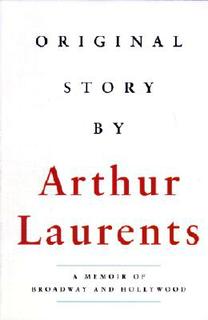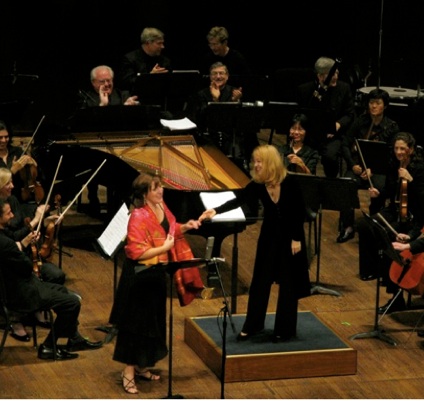 Everybody’s having his or her say about Arthur Laurents, who wrote the books for Gypsy and West Side Story and who died the other day at the age of ninety-three. Much of what’s being said about him is a bit on the sanctimonious side, which is mildly amusing. The truth is that Laurents was one of the most detested people in the theater business, a genuinely nasty man about whom more than a few of his famous ex-friends had nothing good to say, just as he had nothing good to say about them. I suspect that his nastiness was rooted in the fact that he never succeeded in writing anything of lasting interest other than Gypsy and West Side Story, and resented his better-known collaborators for having made possible his own success, such as it was.
Everybody’s having his or her say about Arthur Laurents, who wrote the books for Gypsy and West Side Story and who died the other day at the age of ninety-three. Much of what’s being said about him is a bit on the sanctimonious side, which is mildly amusing. The truth is that Laurents was one of the most detested people in the theater business, a genuinely nasty man about whom more than a few of his famous ex-friends had nothing good to say, just as he had nothing good to say about them. I suspect that his nastiness was rooted in the fact that he never succeeded in writing anything of lasting interest other than Gypsy and West Side Story, and resented his better-known collaborators for having made possible his own success, such as it was.
For my part, I wrote nothing about Laurents’ death because I’d already said my piece about him in a Wall Street Journal review of Original Story By, his 2000 autobiography. Laurents spewed venom all over a long list of people, Jerome Robbins in particular, in Original Story By, which explains the last paragraph of my review:
Jerome Robbins was one of the twentieth century’s greatest choreographers, while Arthur Laurents will in the not-so-long run be remembered solely for having collaborated with his artistic betters, Robbins very much included. Small wonder, then, that Original Story By leaves a rancid taste in the mouth. For all its irresistible readability, too much of it stinks of smugness and spite–and envy.
So it did, and does.

 In the first act, set in 1933, we meet the title character, a spunky young black woman (Sanaa Lathan) who works as a maid for a white film star (Stephanie J. Block) but longs to break into the movies herself. When Gloria, Vera’s employer, gets a shot at the lead role in a high-calorie weeper called “The Belle of New Orleans” that also has a small but choice part for a slave, Vera contrives through elaborately silly means to audition for the part. Then we flash forward to 2003 and learn that she not only got it but became one of the most successful black actresses in Hollywood–though she was never allowed to play anything other than slaves and maids. The second act is set at an academic colloquium called “Rediscovering Vera Stark” in which three pseudo-hip film-studies professors (Daniel Breaker, Kimberly Hébert Gregory and Karen Olivo) wrangle over the meaning of Vera’s career and show a clip of a 1973 talk-show appearance in which she and Gloria are reunited for the first time in years.
In the first act, set in 1933, we meet the title character, a spunky young black woman (Sanaa Lathan) who works as a maid for a white film star (Stephanie J. Block) but longs to break into the movies herself. When Gloria, Vera’s employer, gets a shot at the lead role in a high-calorie weeper called “The Belle of New Orleans” that also has a small but choice part for a slave, Vera contrives through elaborately silly means to audition for the part. Then we flash forward to 2003 and learn that she not only got it but became one of the most successful black actresses in Hollywood–though she was never allowed to play anything other than slaves and maids. The second act is set at an academic colloquium called “Rediscovering Vera Stark” in which three pseudo-hip film-studies professors (Daniel Breaker, Kimberly Hébert Gregory and Karen Olivo) wrangle over the meaning of Vera’s career and show a clip of a 1973 talk-show appearance in which she and Gloria are reunited for the first time in years. I’m just about to wrap up my New York-based duties for the 2010-11 season. I finally caught up with Tony Kushner’s
I’m just about to wrap up my New York-based duties for the 2010-11 season. I finally caught up with Tony Kushner’s  I didn’t, though, so I mean to approach the next two weeks with the best possible attitude. It helps–a lot–that I expect to enjoy all five of the shows that Mrs. T and I will be seeing. It helps, too, that we’re visiting three cities that we both find highly agreeable, and since I have to set aside enough time along the way to write and file reviews for the Journal, we’ll be sitting down in each city long enough to relax a bit, see a few sights, eat some good meals, and visit with an assortment of old friends, including our beloved Our Girl in Chicago.
I didn’t, though, so I mean to approach the next two weeks with the best possible attitude. It helps–a lot–that I expect to enjoy all five of the shows that Mrs. T and I will be seeing. It helps, too, that we’re visiting three cities that we both find highly agreeable, and since I have to set aside enough time along the way to write and file reviews for the Journal, we’ll be sitting down in each city long enough to relax a bit, see a few sights, eat some good meals, and visit with an assortment of old friends, including our beloved Our Girl in Chicago.